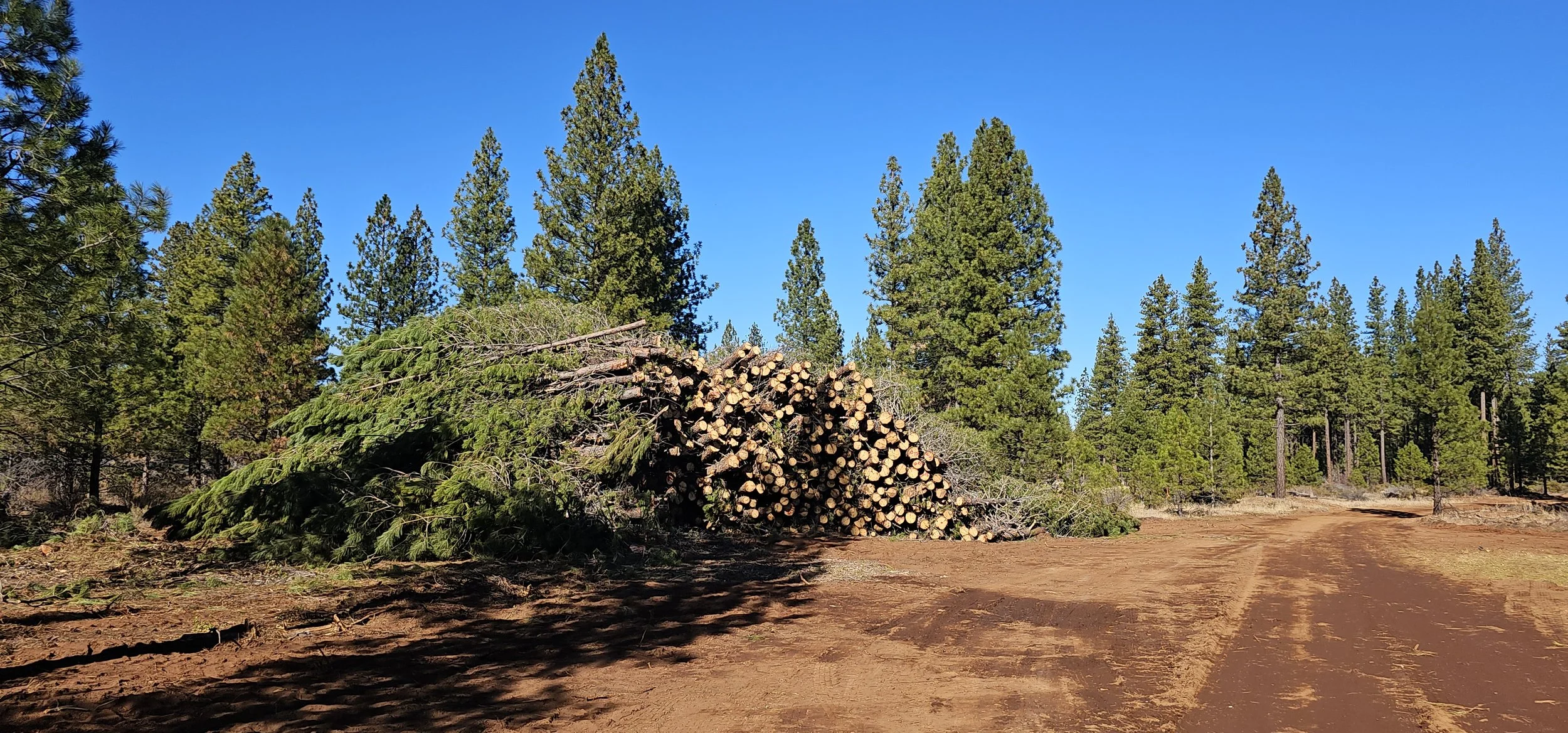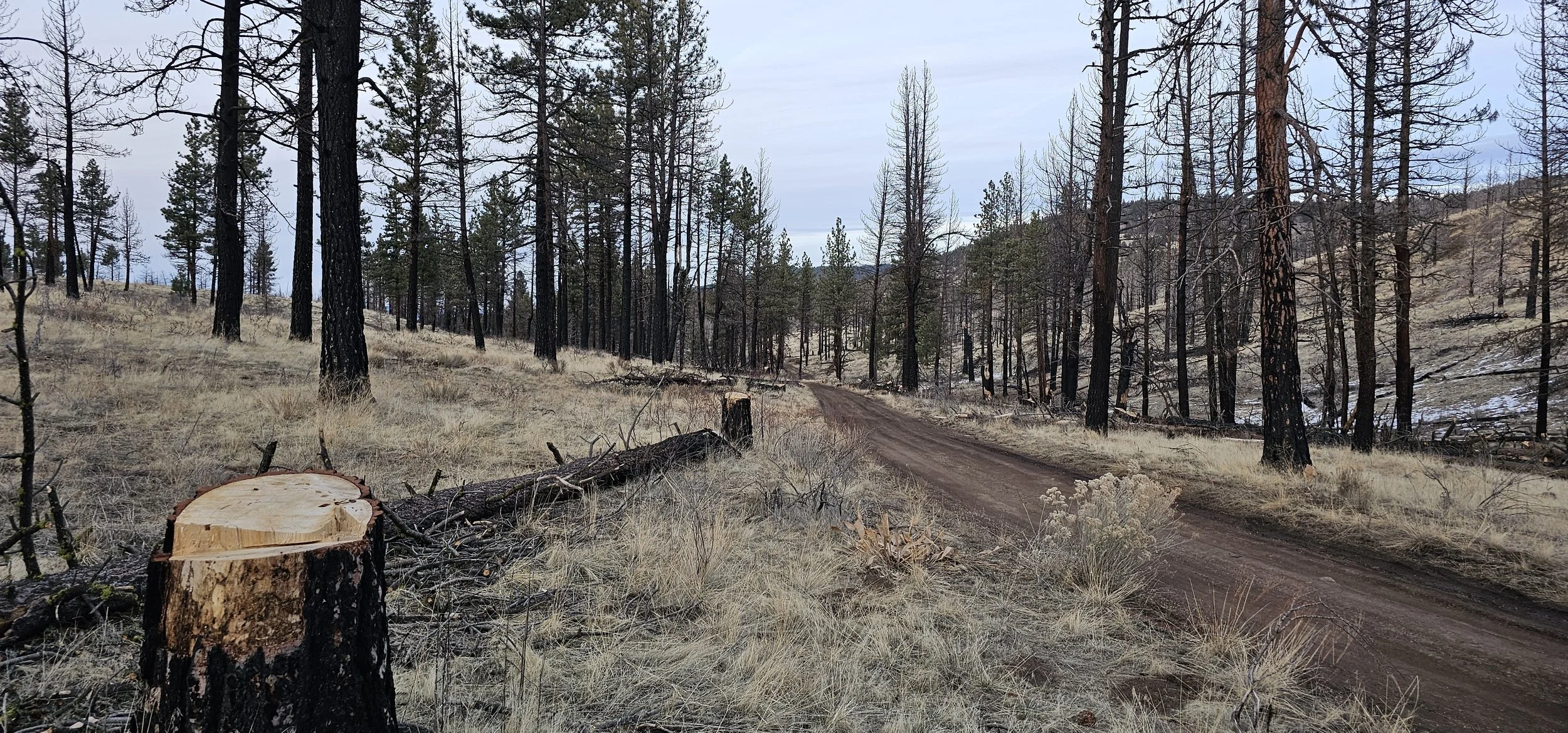Upper Pit River Fire Prevention
Stewardship West is partnering with the Modoc National Forest, private landowners, and various federal, state, local, and tribal partners to enhance forest health in the Modoc National Forest. Collaborators include the NRCS, Pit River Tribe, Modoc Nation, Fort Bidwell Tribe, Modoc County Board of Supervisors, Modoc County Farm Bureau, Sierra Nevada Conservancy, and CAL FIRE’s CCI program. Together, they are developing the Modoc 10-Year Vegetation Plan.
The initiative focuses on proactively treating green, dense, and overgrown forest areas to improve health and resilience against catastrophic wildfires. The approach prioritizes landscape-level resilience rather than post-wildfire restoration. The project targets forest-wide powerline fuel breaks, with a specific focus on the Hollenbeck Hazardous Fuels Treatment Project.
This effort aims to enhance forest health for critical species like the white bark pine, bolster resilience to wildfire and climate change, improve public safety, increase water quality and quantity, and reduce wildfire carbon emissions. Improved forest health will also benefit threatened wildlife species.
Funding for this project provided by the California Department of Forestry and Fire Protection’s (CAL FIRE) Wildfire Prevention Grants Program.
Burlington-Scarface Hazardous Fuel Reduction Project
Location: Modoc County, California
Size: 2,030 acres
Land Ownership: Sierra Pacific Industries (SPI)
Partners: CAL FIRE
Project Overview
The Burlington-Scarface Hazardous Fuel Reduction Project is a wildfire mitigation effort on private timberland in Modoc County, California. Spanning more than 2,000 acres, the project is focused on reducing hazardous fuels to improve landscape resilience and protect nearby infrastructure from the threat of wildfire.
Though the project area is largely uninhabited, it sits between key facilities such as the Longbell USFS Guard Station and the CAL FIRE Happy Camp Station. It is bordered by a railway line, access roads, and national forest lands. Fuel treatments in this area play a critical role in protecting gas lines, power infrastructure, highways, and emergency access routes. The project also contributes to improved water retention, carbon storage, and ecosystem health in a fire-adapted landscape.
Initial treatments target two distinct forest types. An even-aged pine plantation with dense 15-by-15-foot spacing is being thinned to reduce stand uniformity and fuel loading. A second area, made up of uneven-aged natural forest, contains a mix of pine, juniper, brush, and other understory vegetation. Treatments here aim to create a more diverse and patchy vegetation structure, limiting fire spread while maintaining habitat.
Our Role
Stewardship West is implementing the project in partnership with Pit RCD and Sierra Pacific Industries, with funding from CAL FIRE’s Wildfire Prevention Grants Program. Our team designed the treatment layout, supported regulatory compliance, and carried out biomass thinning and mastication treatments across the landscape.
Thinning operations in the plantation aim for wider tree spacing to reduce ladder fuels and fire intensity. In the naturally regenerated areas, mastication is used to break up brush and create irregular openings in the forest, helping to disrupt fire pathways. Trees removed from biomass treatments are chipped and sent to bioenergy facilities, supporting renewable energy use and reducing project emissions.
With nearly 1,000 acres treated in under six months, this project stands as a successful example of private-public collaboration to reduce wildfire risk and restore ecological function in California’s dry forest zones.
Butte Creek Hazardous Fuel Reduction Project
Location: Lassen County, California
Size: 276 acres
Land Ownership: Private landowners
Partners: Pit Resource Conservation District (Pit RCD), funded by CAL FIRE’s Wildfire Prevention Grants Program
Project Overview
The Butte Creek Hazardous Fuel Reduction Project is a targeted wildfire risk mitigation effort in the Wildland Urban Interface (WUI) of Lassen County. The 276-acre treatment area includes the Butte Creek subdivision, a rural community with over two dozen habitable structures surrounded by a mix of private and federal forestland.
The project area was heavily impacted by the 2020 Gold Fire, which burned the southern half of the site at high severity. Since then, hazardous standing dead trees and fast-regenerating vegetation have increased the risk of another high-intensity fire. To address these threats, Stewardship West will lead the removal of fire-damaged hazard trees, along with mastication and thinning of dense brush and small-diameter trees.
Fuel treatments will extend at least 150 feet from homes, with room for expansion based on vegetation conditions. This work not only helps safeguard structures but also improves access routes for evacuation and emergency response. Overall, the project supports fire-adapted community development and long-term recovery of a fire-impacted landscape.
Our Role
Stewardship West, in partnership with Pit RCD and supported by CAL FIRE funding, is overseeing all project planning and will lead implementation in summer 2025. Our team completed treatment layout and environmental compliance and is preparing to carry out fuels reduction operations across the subdivision.
Work will focus on breaking up vertical and horizontal fuel continuity, reducing the risk of fast-moving wildfires. By clearing hazard trees left from the 2020 Gold Fire and managing the understory, this project will restore safer, more resilient conditions for the community and surrounding lands. It also plays a critical role in protecting life, property, and essential roadways in a high-risk fire environment.










